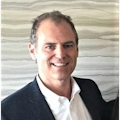Will the City of San Francisco Define the Future of Broadband?
Examining Its P3 Open Access Models —
Modern broadband’s importance to a community’s future is a theme that’s permeated across the country, city-by-city and town-by-town. There is a digital divide and billions of government dollars have recently been allocated to closing the digital divide via rural broadband deployments. Rural communities are not alone in being on the wrong side of the divide. In many major cities divides exist from one neighborhood to the next neighborhood.
The urban digital divide was a large factor that sparked the City of San Francisco to embark on an ambitious project to determine if they could build a city-wide fiber-to-the-premises (FTTP) network. The stated goals of the project are to "close the digital divide, and to provide more choice, competition and affordable Internet service prices."
The city also has 3 stated policy goals:
1. Equality (close the divide)
2. Innovation & Growth
3. Investing in the Future
From the onset, the City’s vision is for a publicly owned network that offers 100% coverage based on the principles of open access. This means the city owns the network, and wholesales it in some fashion to retail service providers. The anticipated array of retail service providers would then compete for residential and commercial customers.
The city got to this point by reviewing several ownership and operational models. They started with a pure public model and a pure private model, and then concluded that the pure public model did not meet their stated requirements, for many reasons. The reasons included a lack of technical expertise and lack of ownership of communication facilities such as utility poles and conduit. The pure private model did not meet the city’s requirements either. Private, for profit, companies have not shown the city any indication that they are willing to deploy FTTP to less affluent neighborhoods.
Currently, the city has identified 2 promising models based on public-private partnerships (P3).
Model 1: Dark-Fiber-only model has a single private partner to "design, build, finance, and operate and maintain (O&M) the outside plant infrastructure, including the fiber itself". It will also be responsible for managing the wholesaling of each strand on an address-by-address basis. This is envisioned to be a long-term contract matching the life of the fiber of 25-30 years.
Model 2: This adds a second private partner, a "Lit-Fiber Concierge". This entity will "light" the fiber and offer "lit services" on a wholesale basis to all service providers. The length of this contract would closer match the electronics’ life cycle of 7-10 years.
There are multiple ways to offer lit services. Examples include wholesale wavelengths over an NG-PON 2 network, and wholesale VLANs over Gigabit Ethernet. Both models will be discussed in more detail, with a focus on how each achieves the stated goals of the city.
The first step in both cases would be to build the ubiquitous FTTP network. Their stated goal is to minimize disruptions to residents and businesses of the 3-5+ year civil construction project which the city estimates will cost approximately $1.5 Billion. Financing is expected to be some combination of public revenue bonds and private funding.
Both models are open and should provide competitive choice for all city residents. The dark-fiber-only model closes the digital divide (Equality), provides choice and, since it’s FTTP, is an investment in the future. The latter policy goal is achieved from the long-life cycle of the passive fiber and the simplicity of upgrading to 10 Gbps services if required. However, the Lit-Fiber Model goes further to achieve the stated goals of Innovation & Growth.
Dark Fiber — Only
Attracting service providers is frequently cited as a problem with open access networks. Hence, the logical question is: who are the service providers that would want to lease dark fiber that’s attached to every location in the City of San Francisco? The local incumbent’s decision to participate will factor in an array of parameters, including the quality of their existing access network and phase of depreciation cycles. Will out-of-region broadband companies (Telco or Cable) see this, as it is, a low-cost way to target new customers, and jump on in, or will they adhere to their footprint? AT&T’s recent move in to the Boston MDU market could be an indication of things to come.
These are all valid questions, yet the demographics and economics will be too compelling, and service providers of all ilk will want to participate. It’s worth noting that if you had only 2 service providers offering real gigabit-speed Triple Play and Internet access, San Francisco, or any city, would be in the top tier of US and Global Communities.
To become a service provider in the dark fiber model you must be able to light it at both ends: the network and the premises. Not only do you have to buy, install, and manage, the central office equipment, you have to buy, install, and manage, customer premises equipment at every location. That would entail acquiring, or outsourcing, a few trucks and crews. The same goes for customer support and call centers. All of which favor scale or creative outsourcing.
The San Francisco model apparently leaves the drop installation to the lighting entity. This adds another set of skills, and another barrier to entry, for small service providers. Supporting 1 or 2 or a few dozen might be feasible for a new service provider, but supporting tens and hundreds of thousands is a barrier to entry for all but a few.
In summary, a dark-fiber-only open access architecture would achieve the stated policy goals of Equality and of Investing for the Future. However, the large barrier to entry may limit smaller service providers from offering new and innovate services. Thus, the dark-fiber-only model falls short on the policy goal of Innovation & Growth.
Lit-Fiber
The Lit-Fiber Model adds a second 3P entity that will be responsible for lighting the fiber. This entails installing and operating equipment at both ends of the fiber, and then wholesaling some type of lit service. As noted, lit services can mean many things, and it’s reasonable the Lit-Fiber 3P could offer an array of them. The key factor being that multiple lit connections can be provisioned securely over the same fiber at the same time. So, each household could subscriber to, and receive services from, multiple service providers at the same time. Services are selected via a menu, so this service model is frequently compared to the smartphone app store.
To become a service provider in the Lit-Fiber Model requires a physical interconnect to the Municipal Network either at the local Central Office or the nearest big city Interconnect point. The service provider would then be on-boarded to the Lit-Fiber entity’s service management systems and to the retail service menus or app stores. The barrier to entry of becoming a service provider is reduced, thereby creating an innovative platform for new entrants.
These services need not be "Internet applications" but rather local broadband applications. In cities where gigabit open access has been deployed, we’ve already seen examples of these local broadband applications. Examples include public safety applications (Ammon, Idaho) and telemedicine applications (Westminster, Maryland). These are local applications with local data that have no need to ever traverse the public Internet.
With a low barrier to entry, local colleges, hospitals, small businesses, entrepreneurs, and governments have a platform for innovation. With low barriers to entry, anyone and everyone can become a service provider for that community.
The open access gigabit FTTP network provides the community a platform for innovative services that can be delivered locally with real Quality-of-Service (QoS) and security. Thus, in addition to meeting goals of Equality and Investing for the Future, this Lit-Fiber Model goes further to meet the goals of Innovation & Growth.
Conclusion
The City of San Francisco should be lauded in its efforts to provide broadband to 100% of its population with an open access fiber to the premises network. We are already seeing other US cities coming to a similar conclusion in what could be a wave of open access muni-networks.
The biggest challenge is deploying the physical glass strands down the streets to every location in the city. Once that is accomplished, the city must decide on their operating model: either dark-fiber-only or dark-and-lit-fiber. Both achieve the stated policy goals of Equality and Investing for the Future. However, the addition of Lit-Fiber services reduces the barrier to entry of service providers and better meets the third stated policy goal of Innovation & Growth.
Innovation should be the rising tide that lifts all boats. Open access FTTP networks are that rising tide that benefit everyone in the ecosystem, including the incumbents. The incumbents win by being able to offer their services over an FTTP network on a variable cost basis, freeing up billions of dollars in outside plant upgrades. The money freed up can then be invested in their own innovative services further driving local economic development and community vibrancy.
About the Author

